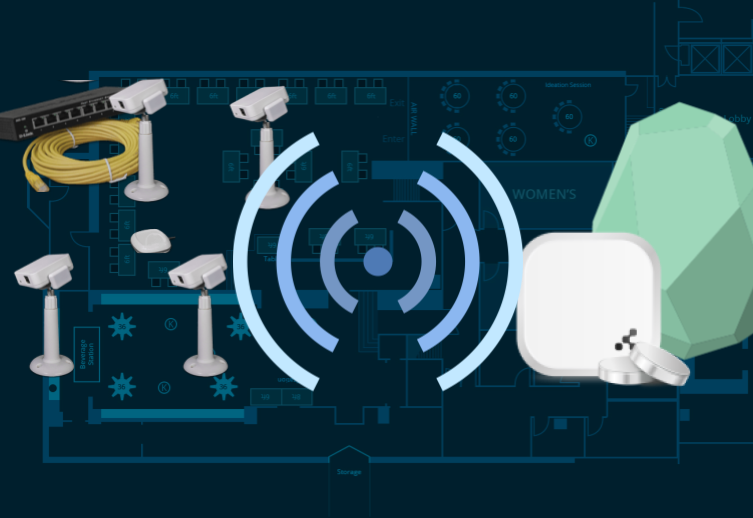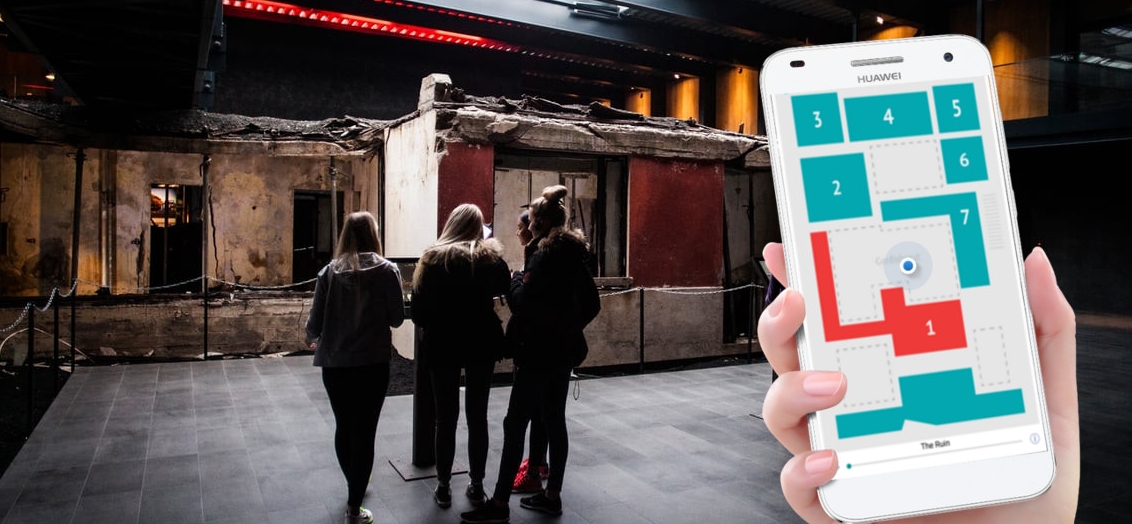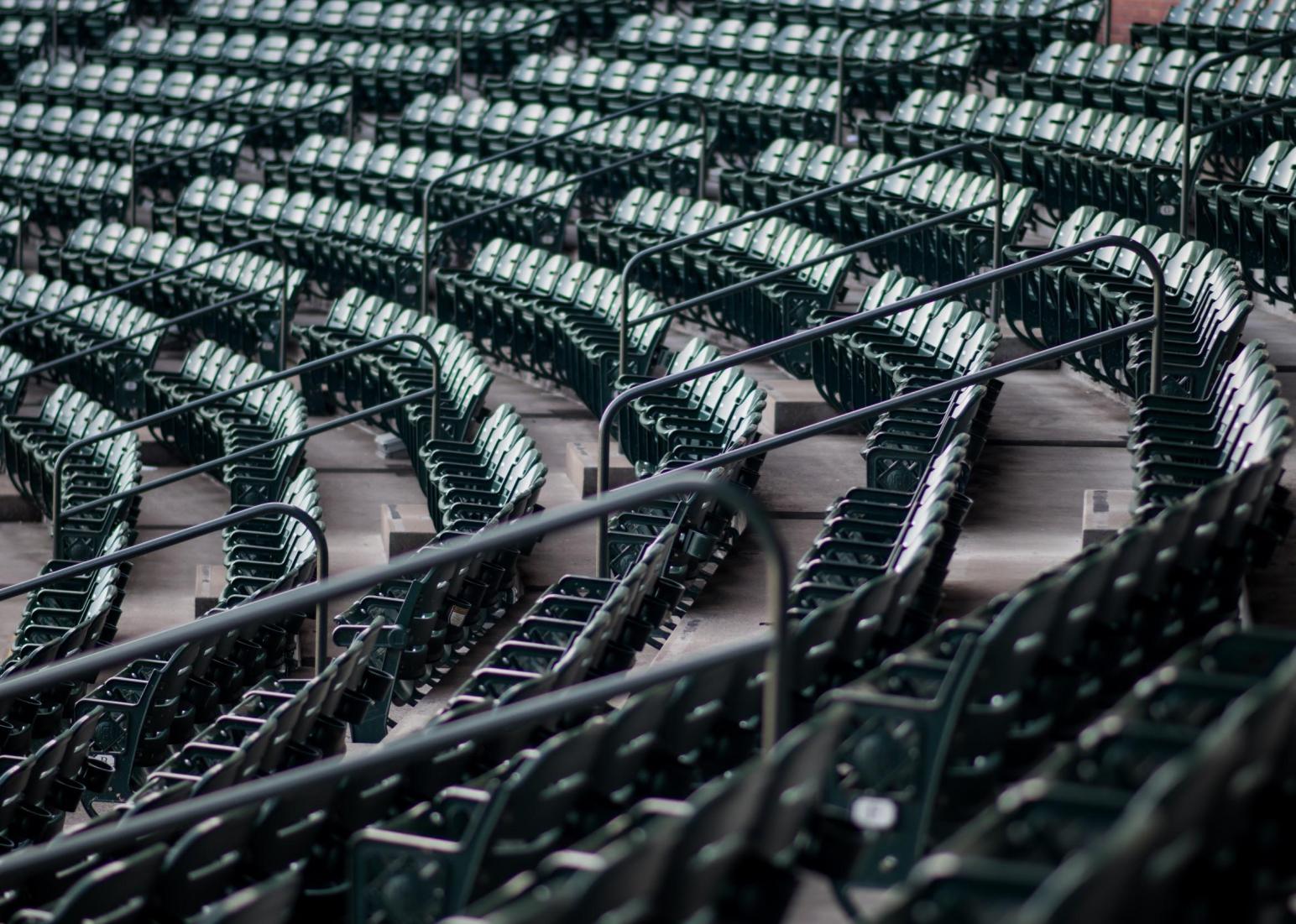Indoor location technologies are advancing as industries look for innovative ways to improve customer experiences and increase revenues. From indoor navigation, asset tracking, analytics and proximity based services, businesses and organizations are increasingly looking to capitalize on these services.
In recent years BLE Beacons have made a variety of indoor proximity services widely available through their low cost easy to use solutions. They are applicable for low-accuracy location services where the smartphone can detect proximity to beacons and know in which room or department the user is in.
The beacons are not sufficient for use-cases with an inherent need for more accurate position and that’s where the Ultra-Wideband (UWB) solution comes in providing centimetres accuracy indoors.
This blog will provide a practical comparison of the two competing technologies, exploring which is most suitable for the most common use cases.
UWB and iBeacon Infrastructure Differences
iBeacon hardware is inexpensive, but installation and maintenance can be an effort. Beacons are battery powered and attached to objects, walls and ceilings and broadcast a signal which the smartphone detects and estimates the distance between the two. The distance estimate is quite inaccurate and varies depending on the physical environmental and distance. Smartphones are a bit slow to react to beacon signals as it can take them 3-6 second to detect a beacon in range.
Retail Solutions (proximity based advertising & analytics)
Retail stores are a perfect candidate for proximity based solutions. Getting your product in front of the right customers at the right time can prove crucial and as e-commerce is impacting retail sales dramatically, the sector is looking for ways to bring shoppers back. Proximity based advertising uses a geolocation to trigger content when a customer goes within the set proximity radius. In this instance beacons are often sufficient where a high level of precision isn’t required and where it is likely the users mobile device will be used as the communication channel of the advertising.
As a user enters a store their smart device is able to connect to the beacons and trigger a location specific ad as they move through the store. This would not be possible with UWB as currently the user would be required to have a UWB tag on them at all times for this to work.
In terms of analytics, if you want to track the number and frequency of visitors to a store, beacons would be sufficient in counting approximate quantity of visitors and approximate time spent in store but UWB enabled shopping carts or baskets could provide much more precise user analytics and heatmaps as shoppers movements are tracked with precision around the store allowing for improved merchandise displays and product placement.
Museum Automatic Audio Guide
 IOT Journal – Fire, Ice and Beacons converge at Eldheimar Museum
IOT Journal – Fire, Ice and Beacons converge at Eldheimar Museum
Another common use case for proximity content triggering is multilingual audio guides in a museum or gallery. This is a familiar scenario for many people, when you enter a museum you are provided a headset and device which plays audio automatically as you approach an exhibit in a museum.
In this instance, again beacons are sufficient where a high level of accuracy isn’t required but for venues with exhibits placed close together or where a quick transition of content is key to the user experience, a UWB solution would be superior for delivering audio, visual or Augment reality content and could provide a new level of immersive augmented experiences.
The museum venue is a good candidate for UWB as guests are often provided with an audio device upon arrival. This allows for the guest to easily access a UWB dongle along with a device and headphones. Where the guest downloads an audio guide app to their own phone, beacons are going to be preferable as they do not need any extra hardware to enjoy the audio guide.
The “Blue dot experience” (Showing user/asset location)
When tracking people or objects using their location, the asset or person is often represented as a moving dot on a map. You’ve probably seen this many times before. This can be achieved with both beacons or UWB and this is one of the best use cases for highlighting the differences in technology when trying to accurately create the “blue dot” experience.
To achieve the blue dot experience you need to accurately know the user location, with beacons this is done via “trilateration” which requires a high number of beacons to be strategically installed so that the user/asset is positioned within 6m of 3 beacons at all times. This quickly becomes a time consuming installation requiring many beacons to accurately cover a large space and is heavily dependant on the bluetooth refresh rate of the device as mentioned earlier.
This is much simpler to achieve with a UWB infrastructure, you need four-five anchors attached in the corners of the room which can provide accurate positioning in an open space of up to 625m2. Not only does this mean a much simpler and quicker installation, the accuracy provided will be far superior with UWB.
Indoor Wayfinding
Picture an office space or hospital with dozens of rooms and hallways, you need to find your way to a specific location, which technology would be better? This is a tough one and depends on the requirements of the use case.
Whilst UWB can penetrate soft walls, many walls could require multiple anchors to be used throughout the building resulting in a costly installation. If hyper precision is not required, 1-2 beacons in each room could provide acceptable accuracy.
Key factors to consider; will the user have access to a mobile device and UWB dongle? Is it viable to offer this hardware at reception? How often does the turn-by-turn navigation need to be updated? How many beacons would be required to ensure a smooth navigation experience?
Conclusion
When comparing UWB and Beacons for indoor proximity and real time location, it is important to fully understand the requirements of your use case before choosing the location technology. BLE beacons are better where there isn’t a need for such high levels of precision but UWB is the best solution when hyper accuracy is desired AND a UWB dongle is practical.
UWB Technical blog coming soon..








